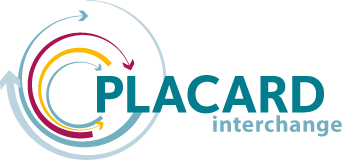Our interactive visualisation explores the climate change adaptation (CCA) and disaster risk reduction (DRR) landscape. We’ve built upon two analyses:
- Stakeholder and boundary organisations, knowledge Platforms, policy and research Initiatives, existing Networks, partnerships and End user needs (SPINE) analysis.
- Social network analysis (SNA) (pdf, 7.5 MB)
Ongoing research, discussions within the PLACARD consortium and with stakeholders have provided ideas on how we can extend the utility of this visualisation for CCA and DRR decision-makers.
Social network analysis – second round
The second round of SNA explores:
- Two-way interactions between national-level actors in Germany, Italy, Switzerland and the United Kingdom
- One-way interactions between national-level and a small group of international actors that were identified in the first SNA as having an important role.
Main messages
- Governmental actors and research institutes were well represented in all four countries, confirming that they have a central role in national CCA / DRR networks.
- Knowledge platforms and businesses were less represented across the four countries, but play an important role where they are involved in networks. Business actors are very active networkers, a role that will increase in importance across CCA / DRR networks in future.
- Certain actors have critical roles in interacting across their networks as well as in setting up interactions with less well-connected actors.
- The one-way interactions of national-level actors with the six international groups suggest that the links are based on shared interests and expertise.
- Interactions among national-level actors in the four featured countries are quite different.
- Both CCA and DRR are dynamic and evolving fields, suggesting that the roles and importance of actors may change over time. Our study identified the emergence of the important roles of networks, non-governmental organisations and non-governmental advisory boards.
- Ensuring the diversity and involvement of voices that are often neglected will benefit the network, allowing it to expand and increase in strength and relevance in the long-term.
Several challenges emerged at the different stages of the SNA exercise, including:
- Setting the network and identifying suitable survey participants
- High workload and fatigue amongst the participants
- Scepticism about the way the data would be used
- The repetitive pattern of the questionnaire
Finally, during the data analysis and results interpretation phase, we found two ‘weak’ points of the SNA method:
- The method is rather static, reflecting actors’ interactions at a specific point in time only
- It cannot capture the reasons behind the patterns that emerge.
These challenges reinforce the notion that SNA should be complemented by other methodological tools such as interviews and focus groups, to allow for a more insightful interpretation of their results.
- The full analysis is available to download: Final release of the network database and associated documentation (164 pages, 6 MB)
Visual SNA analysis
Take a look the visual, below – you can explore the links between either the individual actors, or CCA and DRR networks by using the dropdown menus.
Legend


